Looking beyond the indelible and unforgettable award-worthy performance of Rami Malek as Queen frontman, Freddie Mercury, there are multiple other tines to the production of BOHEMIAN RHAPSODY which are so intertwined and interdependent upon one another that to not have one of these elements at an award-worthy level of excellence would adversely impact the film as a whole. Three of those key production elements are Tom Sigel’s cinematography, Aaron Haye’s production design, and Julian Day’s costume design. Utilizing color as the unifying element between costume and set, with Sigel’s lighting then designed to complement the visual and emotional tonal bandwidth of each scene and the film overall, the result is magical. Each of these artisans could very easily walk away with some Oscar gold and other accolades this awards season, particularly JULIAN DAY whose work could bring him a long overdue Academy Award nomination.
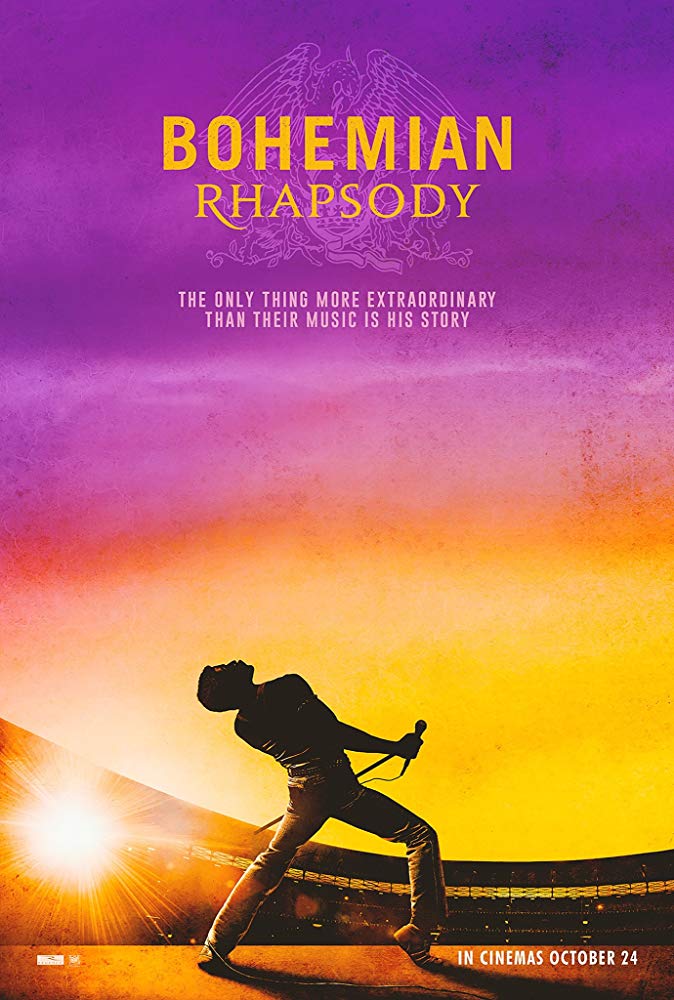
Delving into Queen’s archives of files and photographs, as well as being able to use some of Brian May’s original costumes, Day works wonders. Starting with a muted color palette of the early 70’s and moving into the late 70’s with richer tones, and ultimately the more neon and saturated period of the 80’s, not only is each stage costume for the band telling but so are the costumes for supporting players in defining each of their characters. The fabrics themselves play a huge part in defining each of the characters, particularly Freddie. It was only in the 70’s when stretch fabrics like lycra and Qiana were invented, revolutionizing the fashion industry, and became the basis for many of Freddie’s outfits in order to allow for his movement. With that in mind, here Day incorporates a lot of stretch satins, silks, and velvets available today which allow not only for movement but play well with lighting as is readily seen thanks to Tom Sigel’s magnificent lighting and lensing. While stage outfits are not exact duplicates of those worn in real life by Freddie, the basic designs are true to the originals and serve as perfect visual touchstones for the audience. Two of the most telling outfits in the film couldn’t be more different, yet more impactful – Freddie’s ermine-trimmed red velvet cape and crown and then his Live Aid outfit. Signature pieces that are a joy to see. Looking beyond costuming for Malek’s Freddie Mercury, Day knocks it out of the park with costuming for Lucy Boynton’s character of Mary Austin, who at the time worked for the high fashion store Biba, not to mention the bespoke looks for Tom Hollander’s Jim “Miami” Beach. Each look steeps us in time and place visually and emotionally while clearly defining each character.
Guesstimating that he designed and delivered approximately 8,000 to 10,000 individual costumes, including background extras (more than 1,000 of them as part of the Live Aid finale sequence alone), JULIAN DAY proved Herculean in his efforts. Long known for his period work in films like “Pride and Prejudice and Zombies” and “In the Heart of the Sea”, not to mention tonally contemporary films like “Brighton Rock”, “Dom Hemingway”, “The Disappearance of Alice Creed”, “Diana” and more, with BOHEMIAN RHAPSODY, Day surpasses any and all expectations.
I spoke with him at length about his work on BOHEMIAN RHAPSODY. . . .
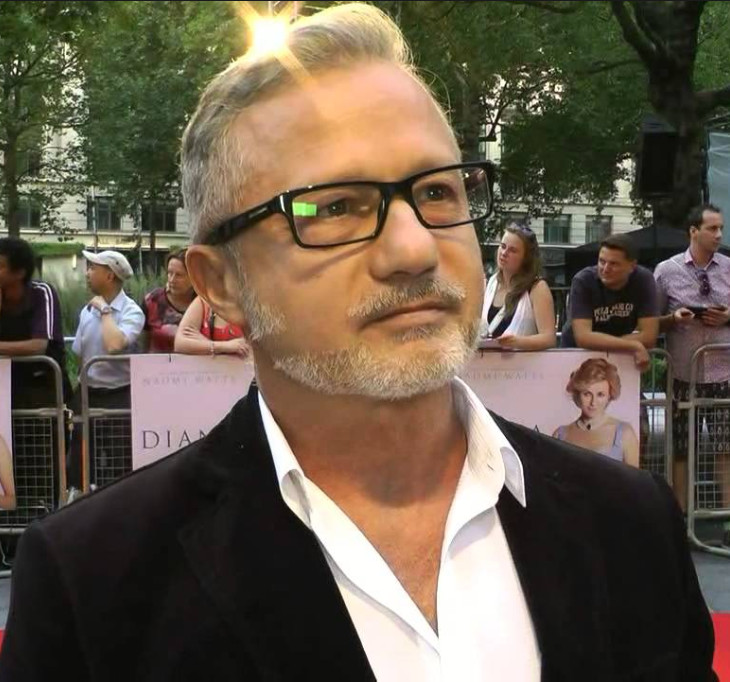
For my money, Julian, this is the cinematic experience of the year. It is my favorite film of the year and if your work here doesn’t get you a long-overdue Oscar nomination, there is no justice in the Academy. I am one of the lucky ones in that I had a chance to see Queen in concert several times over my lifetime, and to see what you have done, not only with the stage costuming, some of which, very iconic, and I know when you get die-hard fans, like Queen fans who are going to go see this film, they are going to nitpick and want to take apart every single little sequin and rhinestone that you have in place, but you have these well-known, iconic looks of Freddie Mercury’s and the band’s that you have to address, and then you have to create this world that we don’t see. The men behind the public façade. The way you had to span this, not just over a couple of years, but 15 years, with some of the biggest visual contextual changes in fashion and hair and makeup, astounding. And you nailed every single visual and emotional beat to a tee.
That’s very flattering, and I appreciate you saying that. So thank you for that. I appreciate it.

Where do you start, Julian? When they come to you with this script and say, “Julian, we want you to do the costuming for this.” Now, I know the last time I saw some kind of outrageous, period kind of costumes with you was when you worked with Richard Shepard to do “Dom Hemingway.” You got to push the envelope with some of the work there. But here, you get to go into glam rock and then the fashion through the character of Mary and high fashion looks of the day. So where do you start when you see this script and you know what this work is about to be?
Well, first of all, getting the script was great. Reading it was fantastic. I knew a little bit about Queen, so I just went on the internet and started doing research and getting my files together. Then I was invited to go to Queen’s archives. So I went down there and looked through all their files. They have countless photographs of them on stage, and even Brian’s [May] got some of his old costumes. So there was a wealth of pictorial reference that I could use from there. Greg, who runs the archive was fantastic, and I got a good insight. They kept things like their stage passes, everything. They’ve kept absolutely everything. I think the thing that was missing was the behind-the-scenes everyday stuff. There’s lots of stage stuff but not very much of the behind-the-scenes.
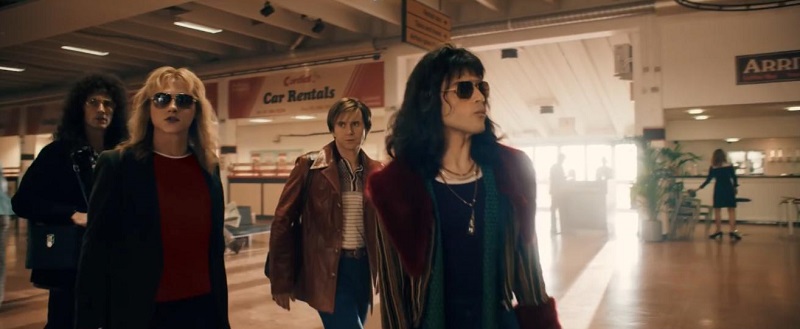
That’s one of the things that I truly love and have always liked about the members of Queen is that so much of their private lives did stay private. It wasn’t out in public. Is that where you really got a chance to embrace the personalities of each one of these men and women?
Exactly. I think the stage was well-documented, and as you said, there are going to be people out there that will pick it apart and find fault with it, that’s inevitable. And I’m prepared for that. It’s fine because I wanted to pay homage to a completely unique band. I think they’ve had such energy, all four of them. There are some things that I’ve replicated with the help of people like Zandra Rhodes who made the white-winged outfit. I had various makers that were associated with Queen that worked for the people that produced the actual costumes. So I had a great wealth of background knowledge for them. These have been well-researched and well-looked at. But as you said, some people are never satisfied.
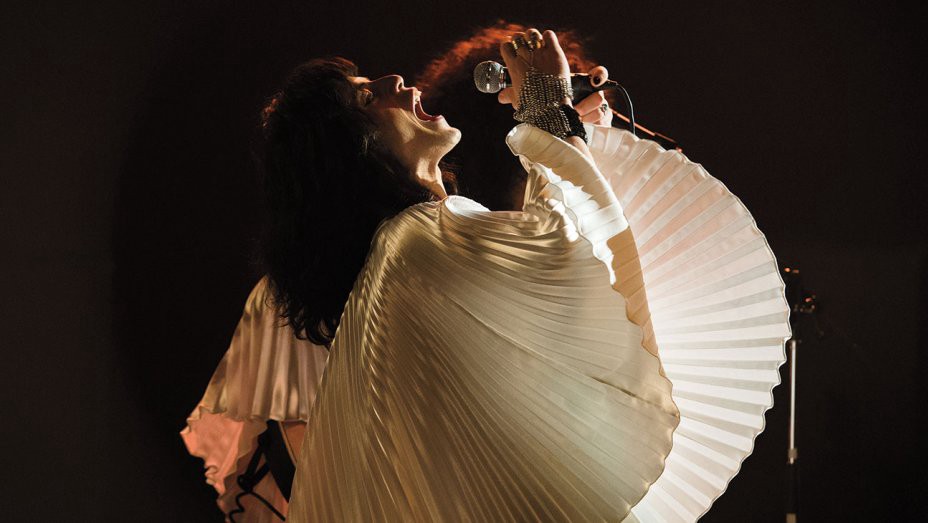
In your designing is something that is very, very important here, and I see it carry through through Aaron Haye’s production design, and it also works into Tom Sigel does with the lighting in particular, on stage and behind-the-stage, and that is the choices of colors representing the different eras. We’ve got the ’70s where everybody had it in their kitchen, avocado greens and oranges and yellows, the brownish end of the hippie era, and moving into the ’70s era of primary colors, and then ultimately the glam rock with the neon, the gorgeous eye-popping looks. And then ultimately what we saw from not just Queen but the public in 1985 at the time of Live Aid. So I’m curious how you developed the color palette that was then followed through. Did Aaron come up with the color palette first? Did you come up with it first for costume? Did you work in tandem?
Worked in tandem. Aaron is such an amazing production designer and is very collaborative, as well as Tom. And I think we sort of, me and Aaron, just sat down and started talking colors. We worked separately about our color palette, and then when I first started working with that, then he started, and then we came together and by chance, by luck, by design we had the exactly the same color palette. It was fantastic! It was a great experience working with Aaron. He’s so intuitive. We work so well together. Sometimes it’s quite difficult, but he’s such an easy guy. So, yeah, the color palettes were sort of in some ways relatively easy to come up with. From my point of view, you look through footage or books and you sort of, you gauge the sort of the idea of color. The ’60s and ’70s, even though it was slightly muted colors, it was still very rich and really beautiful colors. I think going through to the ’80s where they became more neon and more sort of the saturated, well, sort of saturated with those in the mid-’70s and late ’70s. It wasn’t that difficult because it was there for you. And I’ve lived through those eras, so it was quite easy to do that. I think it was a very conscious decision to choose those colors as well.
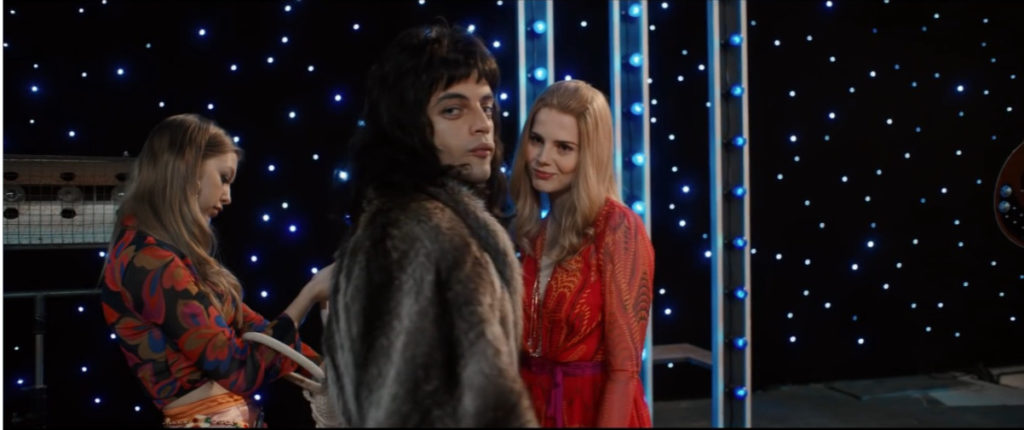
I’m curious about dressing Lucy Boynton as Mary because of the fact that Mary worked at high fashion at Biba and always had her best foot forward representing where she was working. Did that give you a chance to counter the look a little from what you were doing for the guys in the band?
When she worked at Biba, she was actually put at the front of the store because she was fashion forward which is what Biba was all about. So I think she was at the forefront of all that fashion. I also believe that her and Freddie worked in a store in High Street Kensington which, again, was one of the most fashionable places to get clothes at the time. A lot of rock stars came there and they bought their clothes. So I think you get a real sense of fashion from Mary and from working at the store. Obviously Biba was such an incredible store at the time, and it was very revolutionary. It was sort of trying to bring high fashion to the general public. It wasn’t an exclusive label. They really wanted to bring all fashion to all people at the time. So it was great. I think they really succeeded in doing that. I mean, it was very rich and baroque and exciting. Lots of uses of animal prints and velvet and silk. I think that all fit into Freddie’s look at that time. I think Mary must have inspired him. That’s the idea that I wanted to get across. I think she was a powerful fashion influence on Freddie, and I think he was inspired by her and that whole sort of ’30s fashion, that sort of silks and the velvets. So yeah, I think she was very much an inspiration for Freddie.
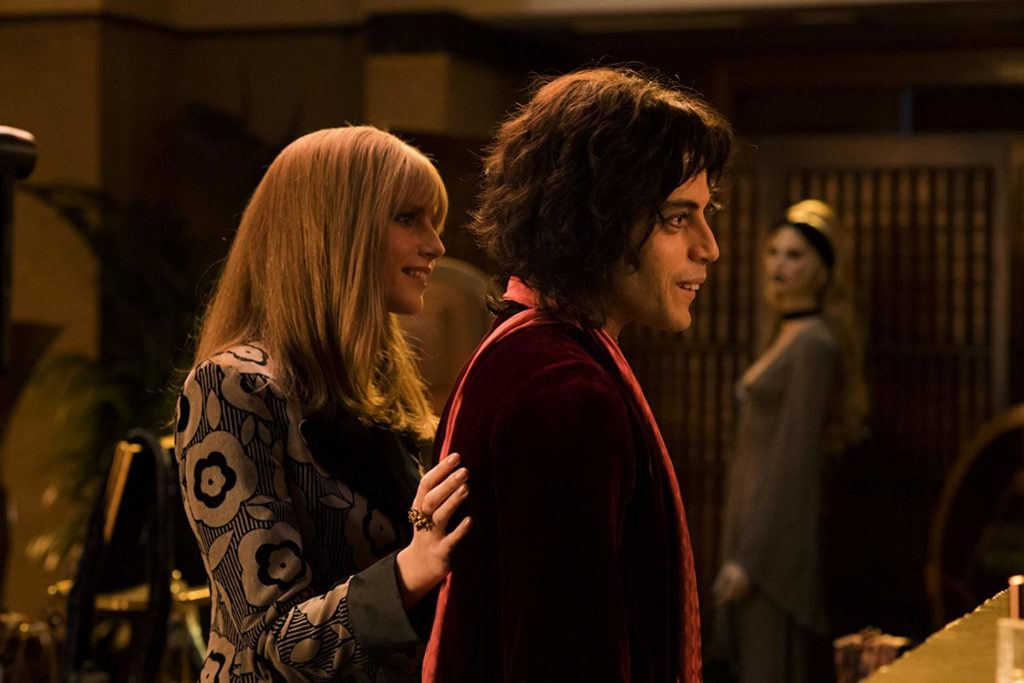
I’m curious, Julian, when actually dressing Lucy as Mary, were you able to source out any of Biba’s actual clothing from the time period, or did you have to work from scratch?
There are pieces of Biba around, but they’re very fragile. What I wanted to do was take inspiration. The leather jacket she wears in this shop was inspired by Biba, really, rather than an actual Biba jacket. I used original license and tried them on Lucy, and then we cut patterns from them and used them as templates. Then I sourced fabrics from London and Paris to do Lucy’s fashion. She’s such a great person to dress anyway, she’s so elegant and very tall. She’s very easy to dress.
How did you go about selecting fabrics? Because you have so many different fabrics throughout this film and not just with the principal actors, but when we get into the extras, I’m seeing polyesters, I’m seeing the catsuit spandex, I’m seeing some gauze, cotton, silks. How did you go about finding all of the different fabric that you had to source in to make all these clothes?
We have some great costume houses so we were hiring a lot of the stuff. I think the thing about this film is because it spans of one and a half decades or slightly more, I think what it was was the idea that everybody that thinks that the decade they were born in or lived in or had their youth in was the most exciting. I genuinely think the sort of ’70s was an extremely exciting decade. It was quite a revolutionary decade for many different reasons. I think the changing in fabrics was incredible. You mentioned spandex, I mean, that’s something that I think revolutionized fashion because it meant that it could be much tighter and skinnier and sexier in a way. So the whole silhouettes were able to change from the ’60s through the ’70s into the 80s. And I think the idea that the use of man-made fabrics, because everything before that was natural fabrics, but these sort of new man-made fabric enabled people to create different shapes and silhouettes. So it’s very, very important. I think fabrics played a huge part in the whole film to create the textures and surfaces. We use a lot of satin, stretch satin, on Freddie. And it obviously gave a great kick for the lighting. Silks as well. When he worked in Kensington market, it’s his whole big influence, 1930s fashion. The ’70s, basically, is a slight reproduction of the ’30s. It’s only different shapes and then fabrics used from there, so I think it was very important to use the original fabrics. I used a lot of original shirts or blouses on Freddie. Fabrics played such an important role in the film. Not only, as you say, not only on the principals but on the crowd as well.
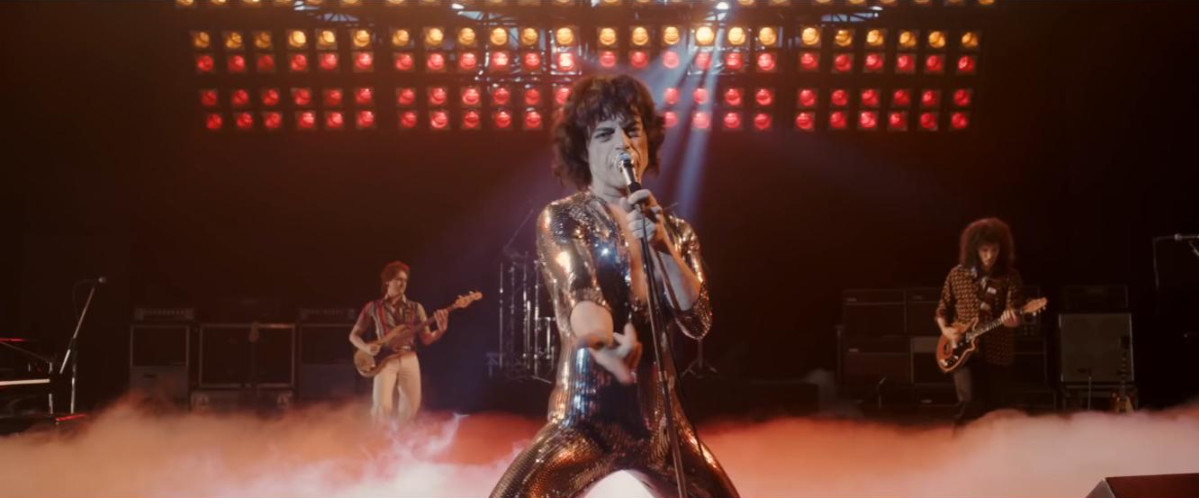
Even in the supporting players, like the bespoke suits that Tom Holland was wearing in his role as Miami. Most of the film you had him in a gray tweed or houndstooth. And it was such a distinctive look whenever we would see him on screen. I’m just looking at all the different textures that you’ve created, and that’s one that stands out. A lot of people think that’s such a small detail but it speaks volumes as to each of these individuals and the era.
I have to say, you are extraordinary. I can’t believe how much you get this film. You really completely understand it. It’s a real pleasure to actually talk to somebody that really understands what people are trying to do in films. It’s just so nice to hear somebody talk so knowledgeably about fabrics and textures and all of these minute details because they mean so much in a film. I think overall there’s an understanding of it, but not the detail as with you when you’ve obviously delved so deep into this, it’s quite amazing. So I have to really take my hat’s off to you. It’s extraordinary. Yes, thank you so much for seeing all these things.
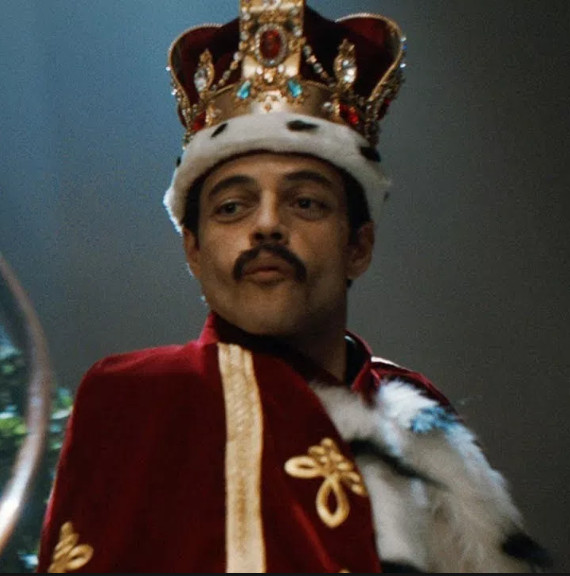
Thank you, Julian. I would be remiss not to ask you about one of the most significant outfits in the film that is a take-off on one of Freddy’s most iconic outfits, the crown and the red velvet and ermine cape. You don’t duplicate that but you do a take-off on it, and you bring it into his party scene with the military jacket and those really incredible silver fringe epaulets you put on it underneath. I saw those shoulders and I actually started chuckling. But it looks so incredible on screen and the way Rami carries it was just magnificent. What was your thought process for not bringing the red velvet cape to the floor with a train, but bringing a revised version to the film to pay homage to that one of the most iconic outfits in his career?
[In addition to costume], we also played with the time scale in the film. Some of the concerts appear in different order. I think that’s fine to do that in film because you’re trying to re-tell. It’s a piece of drama. It’s not a documentary. I think that’s what we all were aware along. We knew this is not a documentary. So I think it was such an iconic Freddy look, and I wanted to incorporate it into the film. It seemed that this was the perfect opportunity. He was king of his own castle, and I think the right opportunity presented that at this party. Also, I have to admit, Rami quite liked the idea of using it there as well. I mean, again, he’s a very intuitive actor. He really understood that character and Freddie so well. So it just seemed the right opportunity. It was one of the things that I wanted to pay homage to.

Did you design the crown too, Julian?
Yes, I did.
That is just a masterpiece! I am in love with that one single piece. You mentioned the fact, Freddie being the king of the castle, I love that outfit for that scene. But speaking of that particular castle of Freddie’s home, I love what you did. There is a very tender intimate scene with him in his piano room at the window with the Tiffany light that he turns on and off to signal with Mary across the courtyard, and you dressed him in this beautiful, beautiful silk robe that had every color in the fabric that is on that Tiffany lamp right there that he’s turning on and off. That moment, seeing that image, so exquisite, so exquisite with the diaphanous nature.
It’s like a collaboration with Aaron. I think sometimes accidents happen and the stars align and you get magic. Sometimes you don’t, but I think that was one of those that actually just happened by because we were very in tune with each other in terms of what we were doing. You don’t always get to speak to the set, the production designer all the time, they’re busy, I’m busy, but I think we had such a great rapport in prep and we sort of totally understood what we were going to throughout ourselves. Even when we didn’t speak, we sort of knew what each other was doing. So it was great.
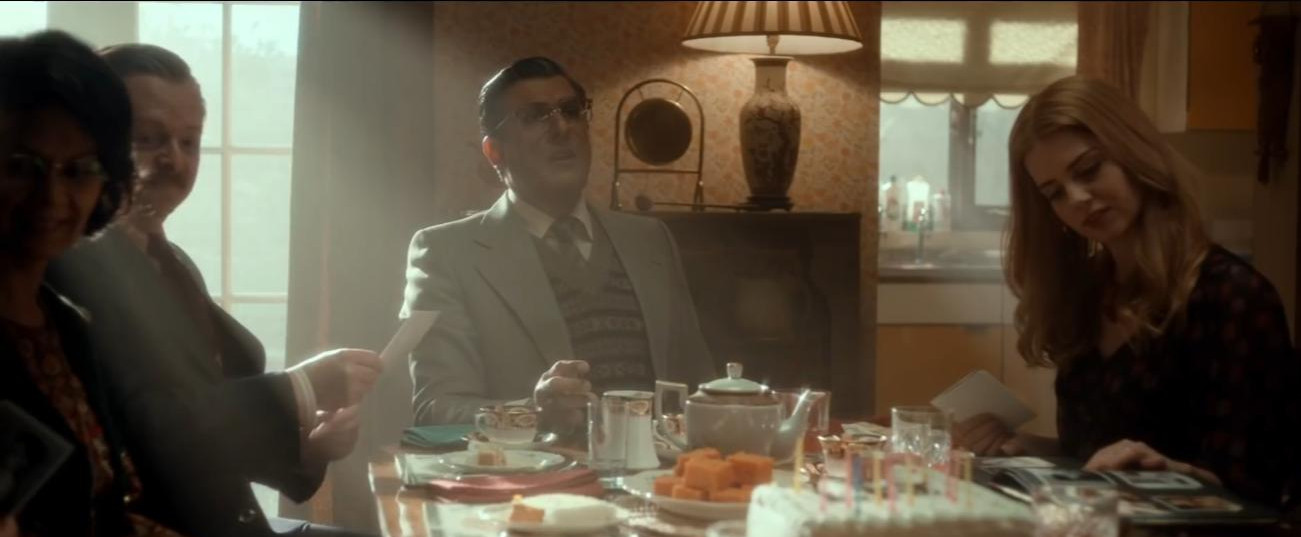
And of course, we have to look at what you did with Freddie’s family, his immigrant family, and the contrast in the costume there, especially with his mother with her turtleneck blouse and shirt and then the apron that pulls over her head and has the little button fastener on the sides. Just a complete turnaround from what we’re seeing everywhere else in the film.
What I wanted to do there was the idea that with Freddie’s family, it comes from Zanzibar and Kenya, they come from this very warm climate. I actually met the lady who plays Freddie’s mother, and her family, who came from the same region and who have a sense of the era. I chatted to her about what her grandmother wore. It’s quite cold, this country. So I wanted to create a contrast to her and some of the other people that appear around that scene. So that was really the thing behind it was how did outsiders feel when they came to this country. There’s a scene, where she’s actually wearing a blue caftan top with golden embroidery on it, with her wearing at her home, which Freddie wore earlier. It was a really nice tie-in to the idea that he stole his mother’s clothes. I would say that just in a general sense of the film how iconic Freddie was, and I think he was such a forward-thinking person. We tried to select clothes that he loved, and some of them became fashionable [statements], but I think we owed so much to his own personal style. He was very progressive about his fashion. The idea of the androgynous look, from wearing sort of slightly feminine clothes to where he starts to develop the idea of his wearing leather.

Those red leather pants are just to die for.
Yes! Fetish wear at the time was not in the mainstream and I think he brought that to the fore without people realizing that. He was just quite progressive in that sense. Nowadays people come out looking exactly how they want. I think in the ’70s it was far more underground really.
Something that I detected in looking at all of the clothes that you designed, especially for Freddie, not so much the band members because they pretty much stay the same and they’re very grounded and down-to-earth through the film, but I kept getting the sense of the clothing that Freddie was wearing over the years told his personal growth. First, he’s covering himself up like an armor, and then as he got more confident, they started to loosen up and get into the more diaphanous type of clothes, get into looser fitting to ultimately he morphed into being so secure in his own skin that that’s when he’s going with tight leather pants and the tight catsuits, and the progression, the emotional progression that I see through the clothing is just astounding, Julian.
I’m so glad you enjoyed it. I think there is definitely the idea that as he developed as a musician and within the band, I think he did find himself. I know at one point when he came to New York he went to a club called the Mineshaft in the Meatpacking District, and I think there was a sort of a meeting of minds there, and I think he brought back that whole idea of being confident with not having as many clothes on. So hopefully, I’ve got across that whole natural progression of his style.
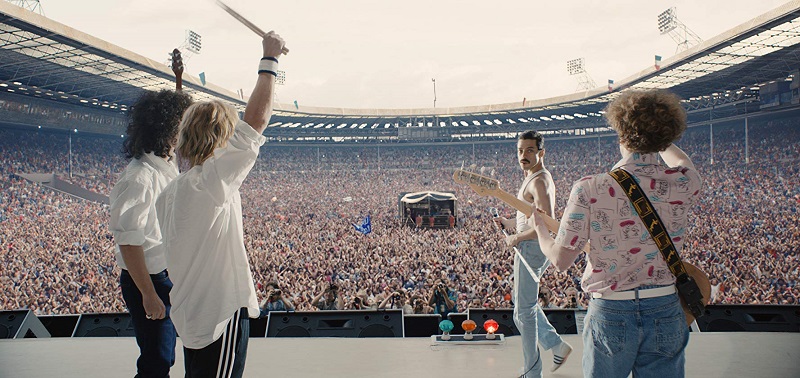
With all the extras, with all the cast, the principals, the supporting players, how many costumes did you have to either create from scratch or source in from somewhere?
Wow! Well, for Live Aid alone we had over a 1,000. I mean, we’re talking tens of thousands. Really, it was phenomenal. For each concert we had three, four, five hundred people dressing. So I actually have no idea, but there’s got to be tens of thousands in all. I mean, we made so many for Freddie, the band. Each one of the band members and Freddie had at least 40 to 50 changes. So a lot. I don’t know, but it’s got to be tens of thousands.
by debbie elias, interview 10/21/2018












